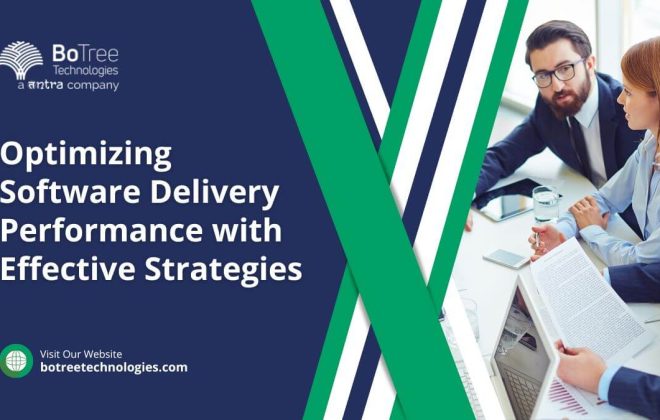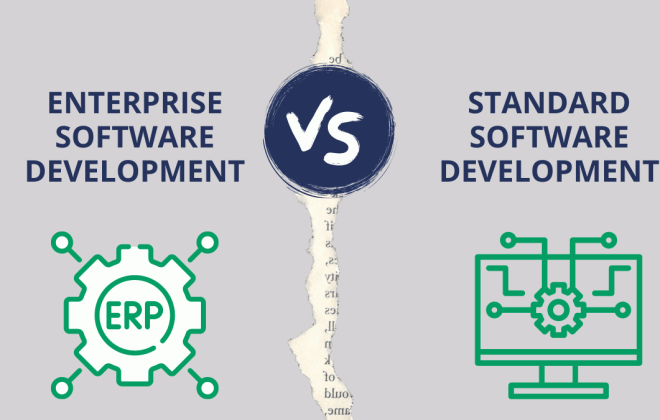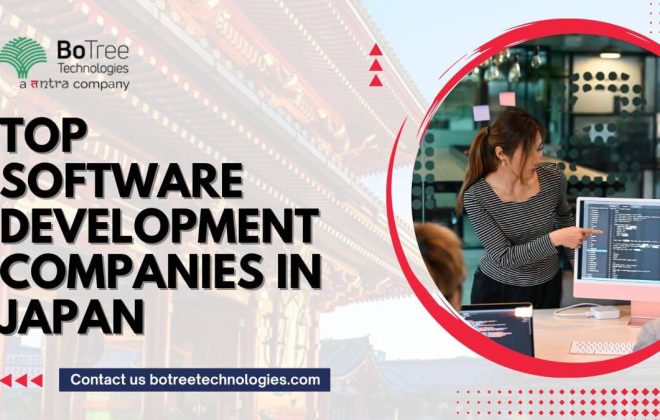
The Ultimate Guide to the Software Development Process in 9 Easy Steps
Ever wondered how precisely the software development process works for those functional, iconic, and interactive apps on your cell phone? How knowing the software development procedures can benefit your business?
Well, software development services involve ideation, curation, direction, analysis, design, trial and error, and implementation. And to make it happen, an enthusiastic, skilled, and dedicated team of software engineers and developers needs to be on their toes.
However, small to medium businesses, startups, and industrial activities are opting for custom software development and applications to enhance specific operation quality—and so should you.
Excel in your aspiring business by learning what software development solution is and the nine easy steps in this process.
What is Software Development?
The software comprises a set of instructions to run a computer or its specific functions. Simply, its development process primarily aims at resolving a specific problem of the user.
For instance, if you need an app to promote your boutique marketing agency, the software development solution you would build must aim at connecting to the clients quickly and having interactive and comprehensive guidelines to follow for their businesses.
The same idea goes when you’re planning to develop an app for your organization. Hire a software development company that will develop it with a clear goal, not on a whim. Imagine the money, resources, and time you would invest in the process, only to end up with a dreadful product—this can put your business at stake.
Read More: 9 Strategies to Speed Up the Software Development Process
So, to lighten your stress, we have a step-by-step software development process as a basic guideline for you in the following.
Optimizing Your Development Efforts: A Guide to the Essential Steps in Software Development Process
Although the software development process steps may vary, the following refer to the basic scenario of the whole process that almost every trusted enterprise software development company follows.
Let us have a closer look at software development processes and methodologies –
- First Concern: Are You Ready to Make It?
- Aiming at your service or product should be the top priority when opting to get an app for your business. This initial step of software development covers the following tasks:
- Service or Product Specification: A brilliant idea isn’t enough without specific information on exactly what you want and how to go about it. So you’ve got to have a service or product specification sheet to get the idea rolling.
- Expertise in Domain: The domain expertise relates to your product or service success. A domain’s specific guidelines and authority help you understand your target audience and their requirements. Domain expertise is a crucial element of readiness assessment.
- Experience and Skills: Guiding a software development team is tedious if you lack the necessary business experience and skills. Years of experience will help you regulate the desired app development. It helps your product management team to produce the app’s blueprint quickly.
- Aiming at your service or product should be the top priority when opting to get an app for your business. This initial step of software development covers the following tasks:
- Know Your Team:
- Your software development team is the star of the whole process. Be open when sharing your app idea with the team members while outsourcing software development services. They can explore better and more comprehensive versions of your primary ideation.
- A software development team typically has:
- a chief technological officer (CTO)
- a delivery manager
- a business analyst
- a software architect
- software developers
- UX/UI designers
- an engineering manager
- a QA engineer
- Validation and Analysis: Is the App Worth It?
- In the validation step, your software ideation gets questioned to know whether your target users can utilize it to solve their problems.
- The validation process may include surveys, polls, etc., to assess the user requirements and opinions.
- The validation helps you analyze the market while outgrowing the competitors to serve the users better.
- Estimation of Project: Tasks, Time, and Cost:
- The project estimation step in software development solution development immediately follows the validation and analysis step. In this step, you can estimate the overall cost of developing the software in two ways:
- Rough estimation
- Detailed estimation
- A rough estimation after discussing with the CTO, BA, and the delivery manager can give you the following costs:
- App features
- Idea validation
- The business analyst (BA) can break down the whole process through rough estimation. He can outline things to do in each developmental stage along with the deliverables with deadlines.
- The detailed estimation is more micromanaged, giving you the detailed tasks and the required hours for each team member. It’s lengthier, taking up to 2-3 weeks to complete.
- A detailed estimation also deals with the software architecture, infrastructure, and deployment platform.
- The project estimation step in software development solution development immediately follows the validation and analysis step. In this step, you can estimate the overall cost of developing the software in two ways:
- Minimum Viable Product (MVP) or Prototype:
- Time for the mock-up—the prototype. A prototype app detects the mistakes, further resources, budget, and improvements to reach the final product.
- You may skip the mock-up if your validation, analysis, and estimation have hit the target. However, it’s good to know how different types of prototypes can help your software development procedures.
- You can work with three MVP types:
- Concierge Prototype: It assesses the user’s specific needs and manually resolves them.
- Clickable Prototype: It’s effective in testing the user interface (UI) on a cell phone and web application. It’s a lighter version that test-runs user buttons, layouts, pages, and modules.
- Full-fledged Prototype: A full-fledged MVP is a broader version of the typical prototype, containing more features so the user can use them and give their feedback.
- Designing and Testing:
- If your prototype phase has worked neatly, use the feedback and collected information in designing your software. Here, your app gets more vivid and visual.
- Reaching the design step means your software is ready for testing. Testing will provide your team with helpful feedback for further development of the app.
- Software Development: The Coding:
- This is where the development team steps in and deals with the frontend, backend, and infrastructure. The coding phase starts here for setting up your app.
- The development stage starts as a Statement of Work (SOW), stating the project schedule, work details, time, resources, payment, etc. A clear and concise SOW should help you keep track of your software development progress.
- The artifacts help with the software engineering steps and ensure clarity.
- Trial, Implementation, and Deployment:
- The trial phase of the software development procedures is done based on a prerequisite QA plan which the whole follows. The plan relates to the trial scope and lets the software reach its optimum level.
- The trial phase helps in:
- Analyzing requirement
- Planning the trial and execution
- Detecting non-compliant issues (defects)
- Pre-launch repetitive testing
- Trials can be manual and automated. A manual trial requires the QA engineer to test the utility, while an automated trial runs itself to detect conflicting issues and glitches.
- Once the trial run gives you the confidence to give it a go, the production process begins. The solid works involved in this step are:
- Server setup
- CI/CD pipeline
- Failure backup
- Deployment plan
- The deployment of the software development step tells you the final draft of your app. It involves launching, platform, usability, and maintenance. This is when your app goes live!
- Maintenance:
- Being live and functional, your app requires proper maintenance. Ideal maintenance of your app should be:
- Corrective: Fixing a reported bug immediately to resolve the problem.
- Preventive: Scheduled checking on the app so you can identify the bugs and glitches and fix them in a timely manner.
- Perfective: Being ever careful and aspiring to optimize and perfect your app.
- Adaptive: Engaging your potential and timely adaptation to third-party add-ons, AI integration, cloud configuration, regulation policies, etc., to meet the standard quality.
- Being live and functional, your app requires proper maintenance. Ideal maintenance of your app should be:
Understanding the Importance of the Software Development Process
From the above developmental stages, you can tell how understanding steps in the software development process can identify, regulate, and enhance your product or service.
The importance of knowing the software development process is as follows:
- Transparent Project Direction: Following the proper software development steps will help your team get a clear and concise project direction. You’ll know precisely what app you want to make and how to help your customers.
- Eliminating Issues: Once the developmental process hits the floor, issues start to arise, needing immediate attention. Following the process will help you eliminate communication gaps and faulty app development.
- Project Management Scope: Your team can understand the boundaries of the developmental process. This way, they can measure their tasks, their corresponding time, and the resources required.
- Shaping the Process: Following the software development process will help you pick and drop the unnecessary tasks of the project. You’ll have a concise roadmap of executing and accomplishing the project in time.
- Comprehensive Tasks and Immediate Solutions: Due to having better communication among the team members and with the customers, any glitch or trouble can be observed and identified soon. Hence, you can quickly solve the problem before it deteriorates the overall process.
- Comprehensive Product Promotion: You can utilize your business analyst’s data-driven opinions in understanding the market and competitors. This provides an insight into the customer requirements, allowing you to solve them with better resources and stand out.
Checkout our Success Stories of Customizable Enterprise CMS
In a Nutshell
Let’s recap the steps of understanding the process for software development to refresh what we’ve learned so far.
It begins with the mindset, then knowing your reliable team, doing validation and analysis, estimation, building prototype, designing and development, trials, and ending with deployment and maintenance.
If you’ve learned the basics of the steps in the software development process, you can outline your business plan and app development process to reap the benefits.
We hope you can develop the best possible app for your startup, small to medium business, or any industrial solution.
Contact us today for a FREE CONSULTATION.




